When I put down my microphone last Friday we were just about to plunge into Shildon Tunnel. In Locomotion, the Dr Who script I’m almost ready to pitch to the BBC, navvies digging this hill hole in 1840 unwittingly rouse the monstrous Shildon Worm sparking four episodes of creepy/claustrophobic capers involving animal-loving S&DR financier Joseph Pease, no-nonsense loco engineer Timothy Hackworth, and the sixteenth Doctor (who reliable sources at the Beeb tell me will be played by Basil Brush not Billie Piper).
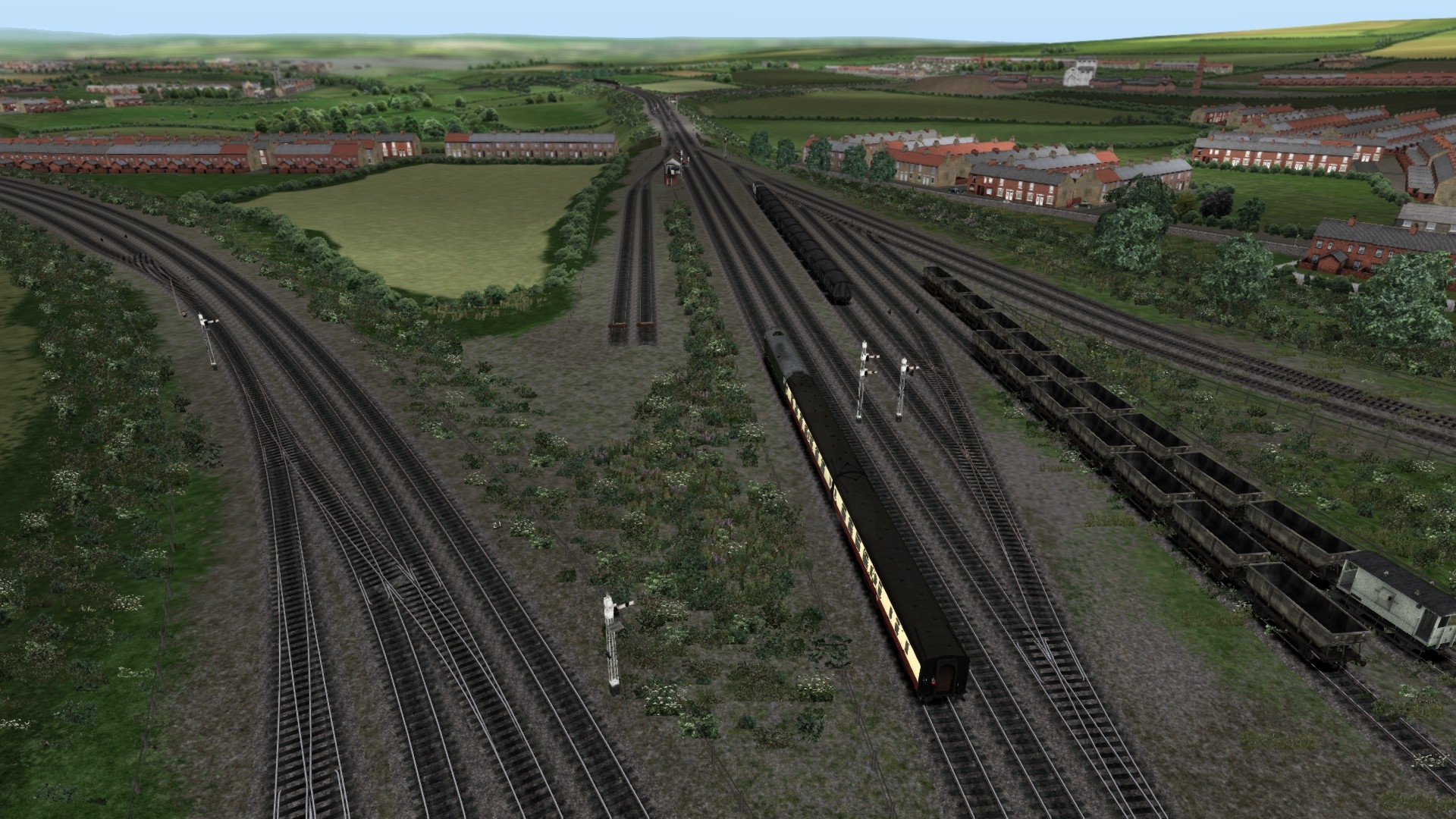
The countryside just north of the tunnel is positively riddled with mine shafts. At the turn of the 19th century within a kilometre of this junction, there were at least half a dozen working collieries. Eldon… Black Boy… Auckland Park… Adelaide… while none of these mines ever suffered an accident significant enough to qualify as a ‘disaster’ all took a terrible toll on the communities hereabouts.

Take Eldon for example. The Durham Mining Museum’s website lists 127 people killed in accidents at this pit. The age range of the casualties and the manner in which they perished underline just how tough life was for the extractors of County Durham’s black gold, especially in the time before trade union pressure and government legislation improved conditions.
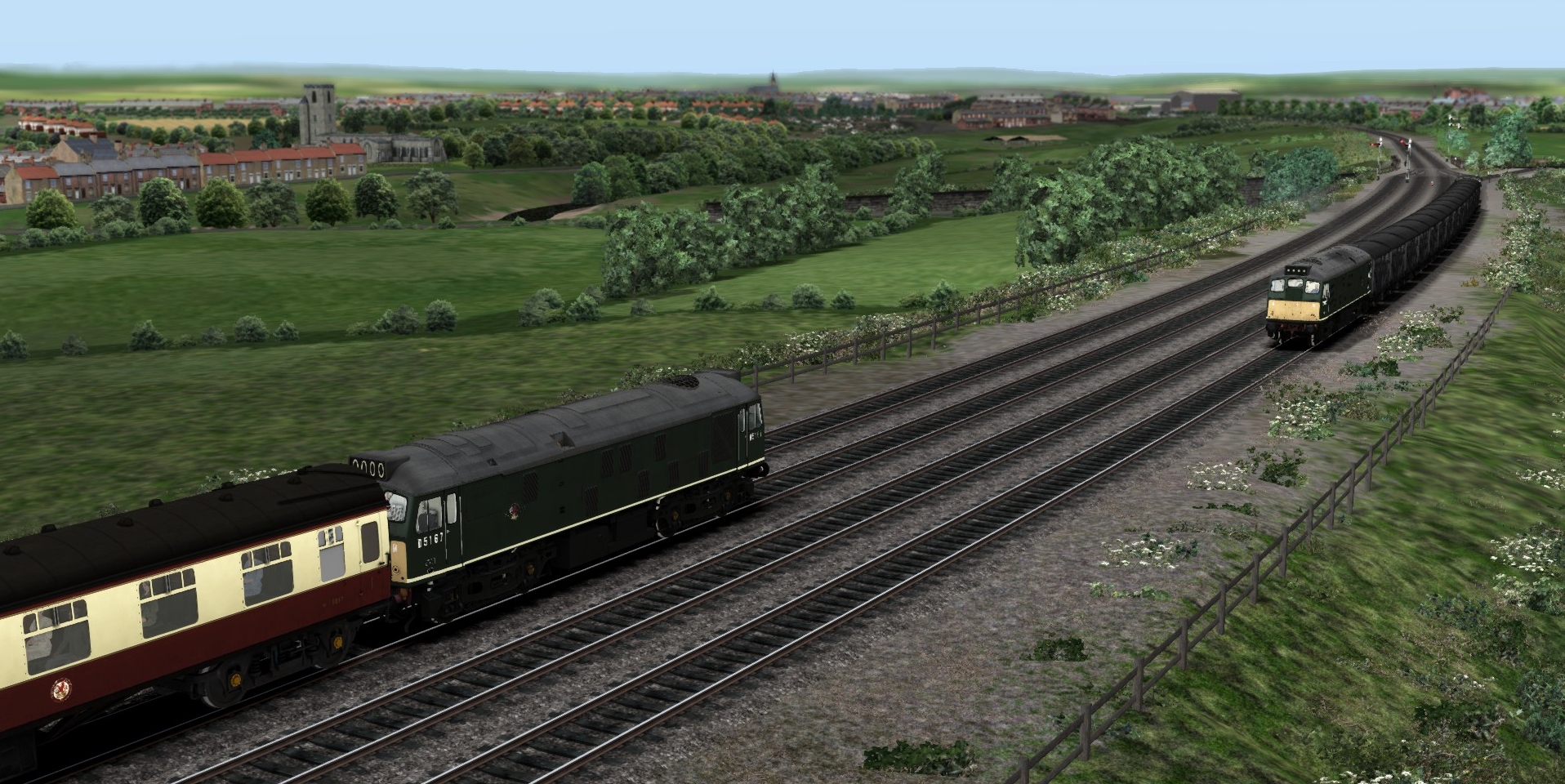
That’s Bishop Auckland up ahead. If you’re interested in British football, you may well know the name, as the town’s football club is one of the country’s most successful amateur sides. The ‘Two Blues’ won the FA Amateur Cup a record ten times, and their 1938-39 treble winning side included a (fairly) local miner’s son who went on to become a legendary manager at Liverpool FC.
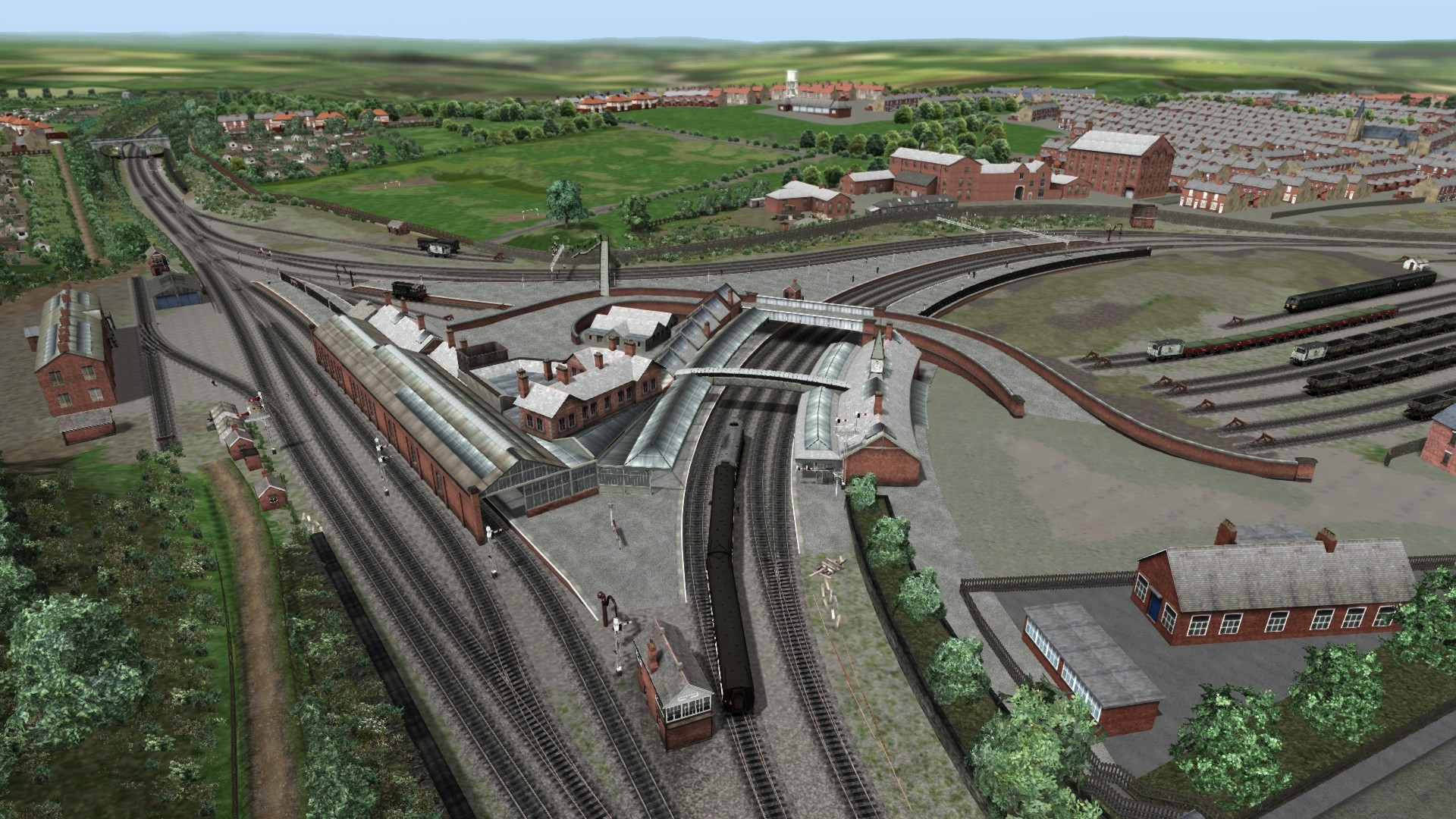
Bishop Auckland could ring bells for rail enthusiasts too. Before line closures reduced it to its current unremarkable single-platform form, the town’s station was a novel triangular affair. Forced to dash between platform ends to clock all passing traffic, local trainspotters must have been as fit as fleas.
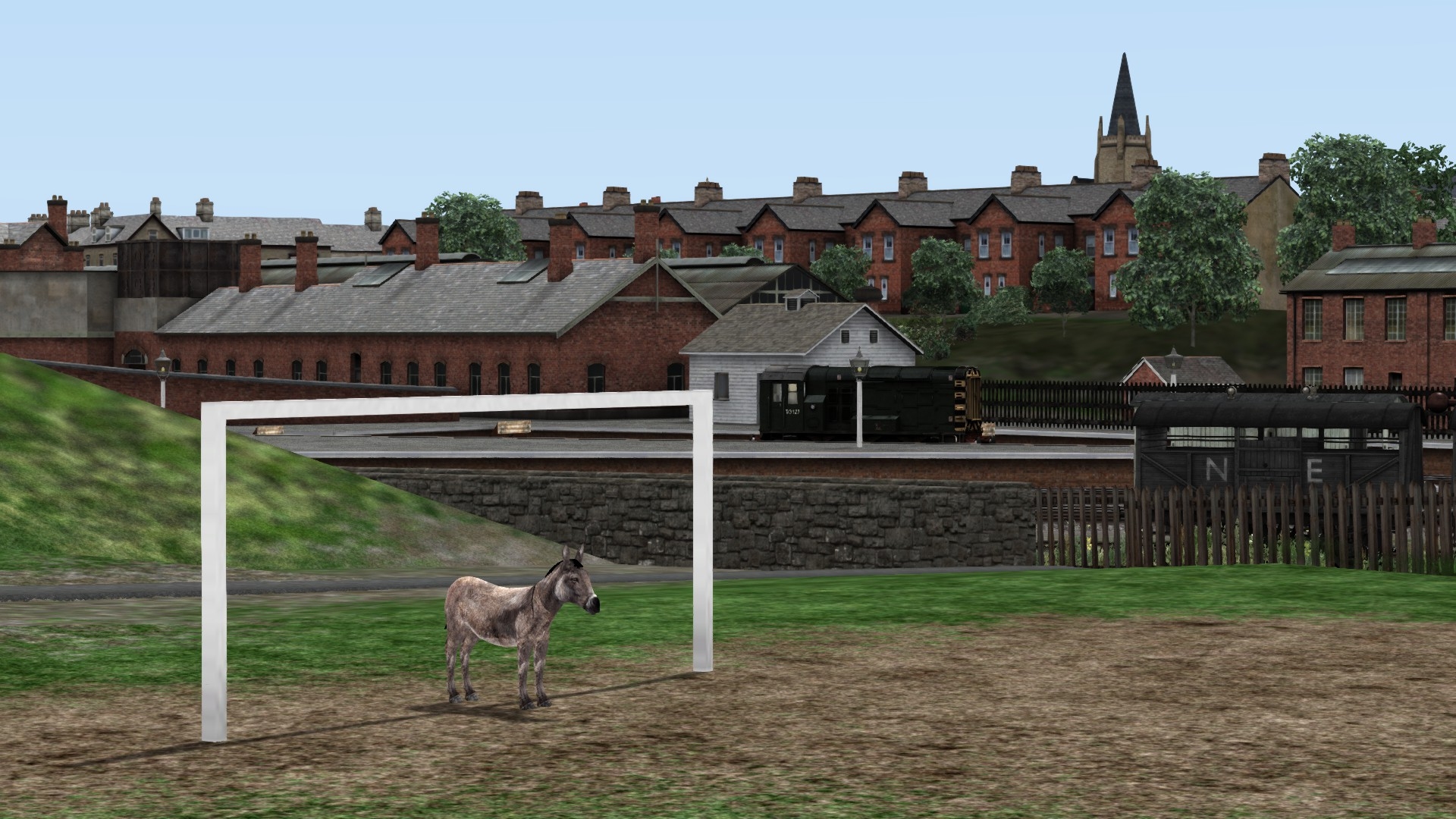
What’s the significance of the goalkeeping donkey visible from platform 4 in TSC2024? You’d have to ask Derek Siddle, the Kuju/RSDL/Dovetail veteran who toiled on Wearsdale and Teesdale for eight years. Born and raised in Bishop Auckland, Derek is just about old enough to remember the old tricorn station.
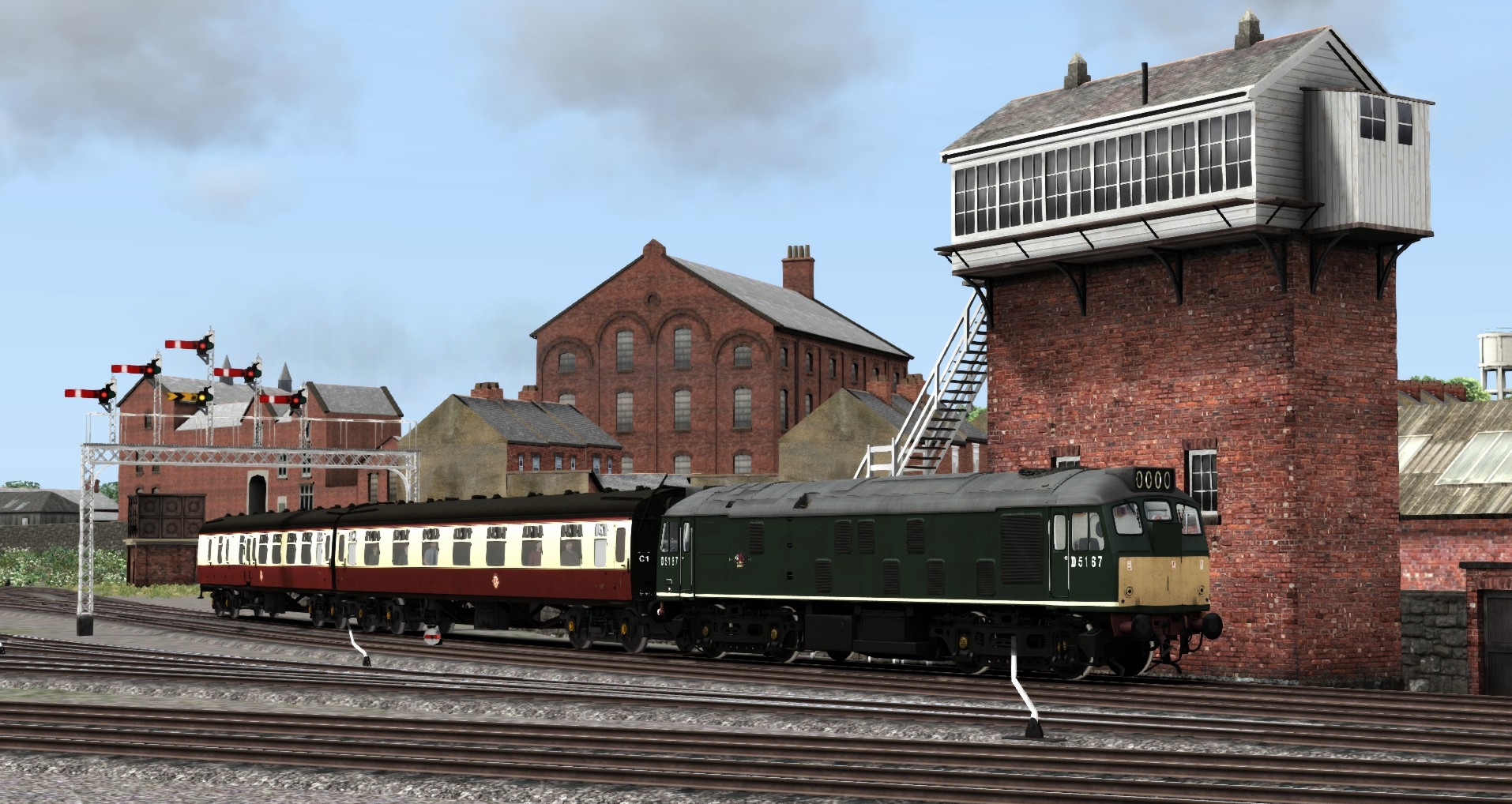
Trundling northward out of the town on a line lifted in the late Sixties, we pass an unusually lofty signalbox that, if it still existed today, would survey a Morrisons car park, then brush Newgate Street – a thoroughfare the young Stan Laurel knew well.
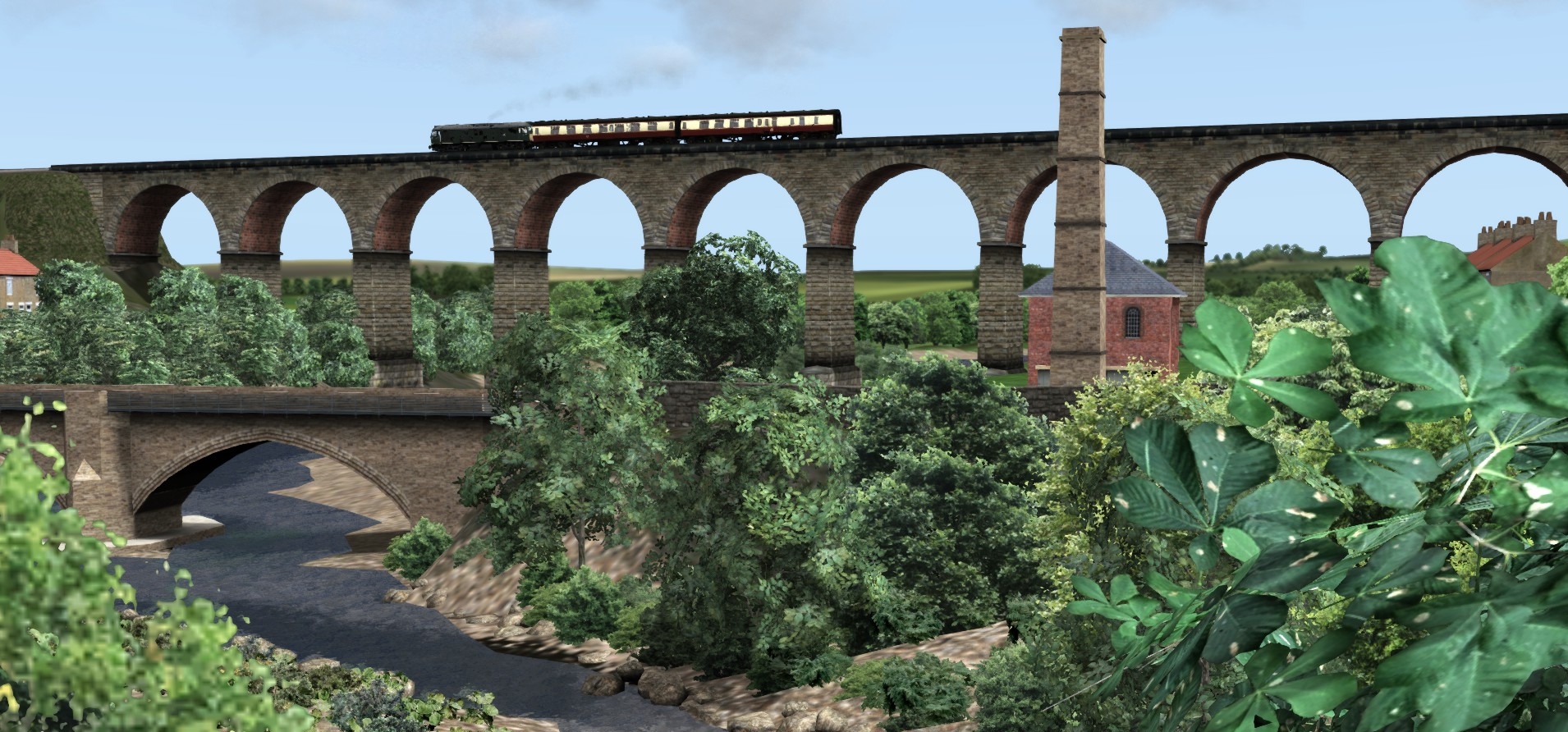
Look right immediately after we cross the River Wear via the honey-coloured Newton Cap Viaduct (now used by motorists and pedestrians), and you’ll see a meander-cupped field patchwork destined to become one of the North-East’s most unusual and spectacular tourist attractions.
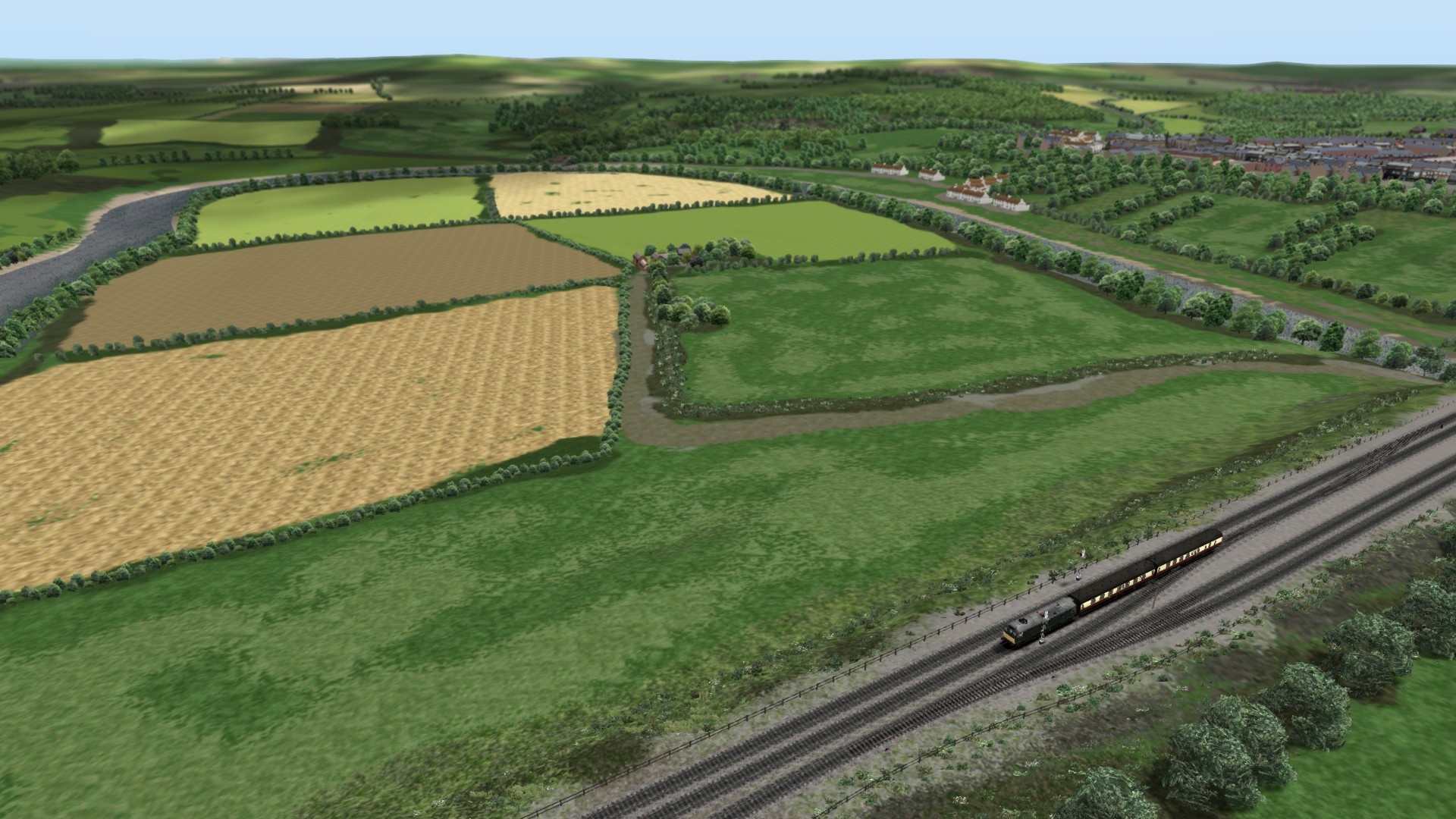
Reviving a British tradition that goes back to Edwardian times, 11Arches, a charity based in Bishop Auckland, has been putting on grand open air historical pageants at Kynren since 2016.
Staged after dark during the summer, the shows involve around a thousand volunteer performers most of whom are human, and manage to cram two millennia of English history into two hours of edifying entertainment. Soon there will be reasons to visit Kynren in daylight too. Storied Lands, a sizeable historical theme park is set to open here next summer.
Kynren’s faux centurions literally walk in the footsteps of real ones. Dere Street, a Roman road that connected York to Hadrian’s Wall and the scary Scottish interior beyond, crossed the middle of the site before veering northwestward at Vinovia (aka Binchester), a hilltop fort and vicus just across the river.
The remains of the largest Roman fort in County Durham haven’t always been treated with the respect they’re granted today. The Saxon church at nearby Escomb was constructed from choice bits of Binchester and in the early 1800s “altars, urns, and other relics” were removed and used as props in local coal pits. Thankfully, a remarkably well-preserved bathhouse and numerous revealing artefacts survived the depredations.
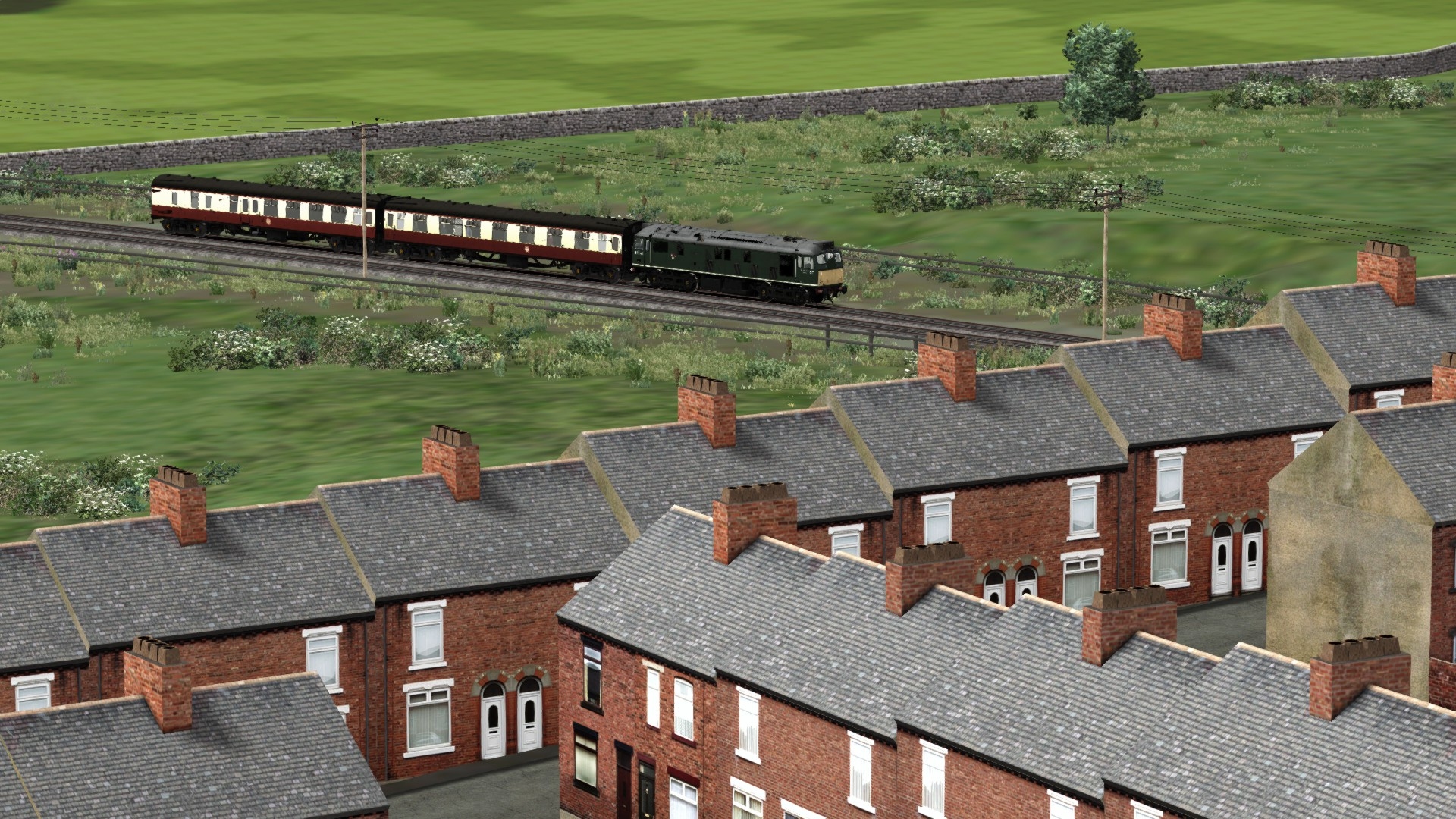
If Durham County Council had got their way, the colliery-dotted stretch of countryside we’re traversing at present – in fact, all the county’s coal mining districts – would look very different today. What Dr. Beeching did to County Durham’s railway network in the Sixties, paternalistic planners tried to do to the region’s smaller pit villages in the Fifties and Sixties. Believing the scatter of hamlets left by the declining coal industry to be inefficient, DCC officials drew up a radical development plan in 1951. 114 villages which had ‘outlived their usefulness’ were to be slowly euthanised through a deliberate process of disinvestment and demolition. Whether they liked it or not, residents of these decaying, amenity-starved ‘Category D’ villages would eventually have no option but to move to shiny new housing estates in places like Bishop Auckland, Darlington, and Durham.
What the planners hadn’t bargained for was the determination of many to stay in the places – the communities – where they’d been brought up and were happy. Decades of protest and resistance eventually caused the abandonment of one of the most high-handed social engineering projects in modern British history.
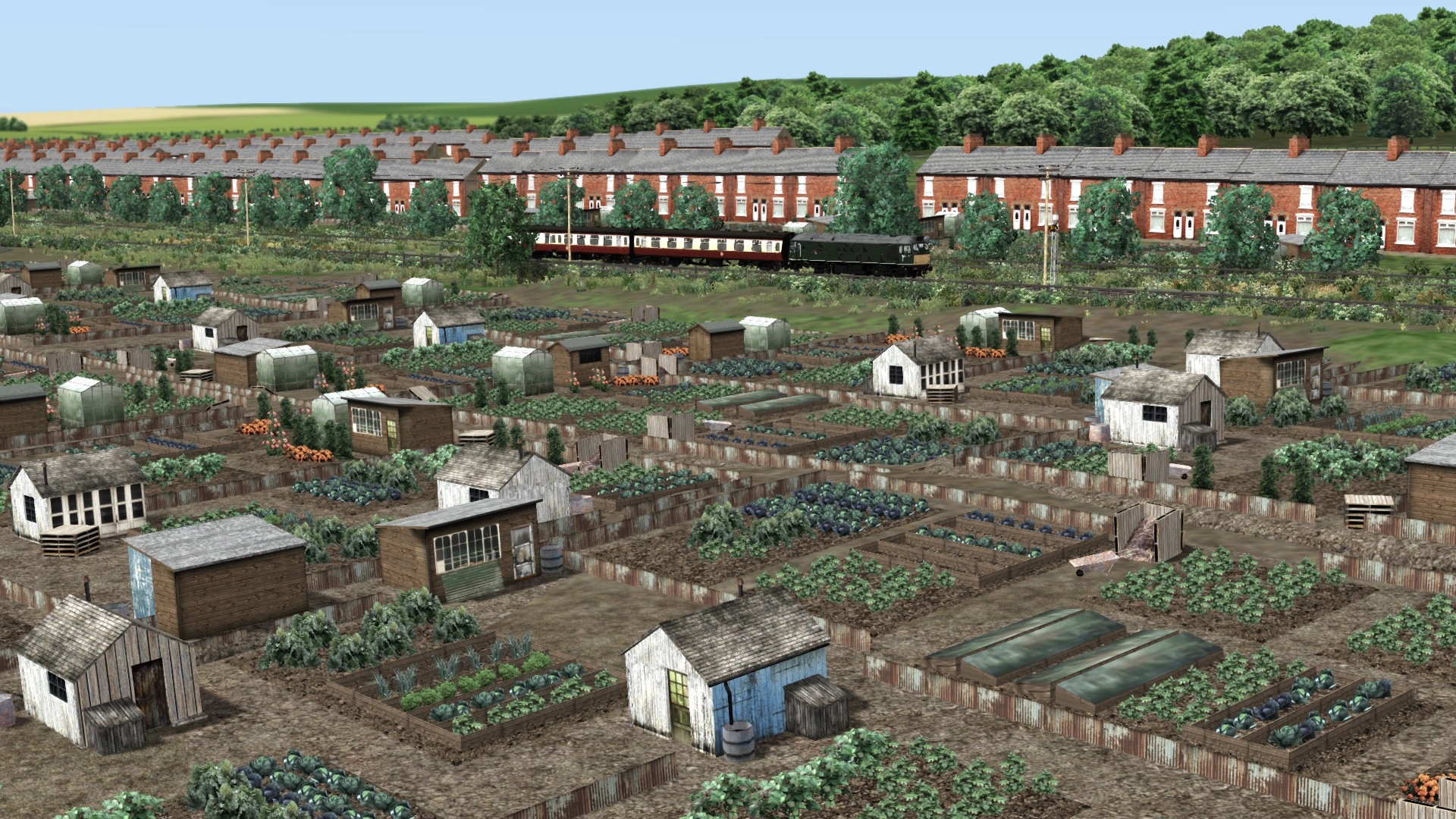
Too big to be Category D-ed, Willington, the village rushing past right now, sports something seen far too rarely in games set in Britain – lovingly crafted allotments. Are the crops visible in Derek Siddle’s serried veggie plots season-appropriate? I’ve not checked to be honest, but show me another title that does allotments this well.
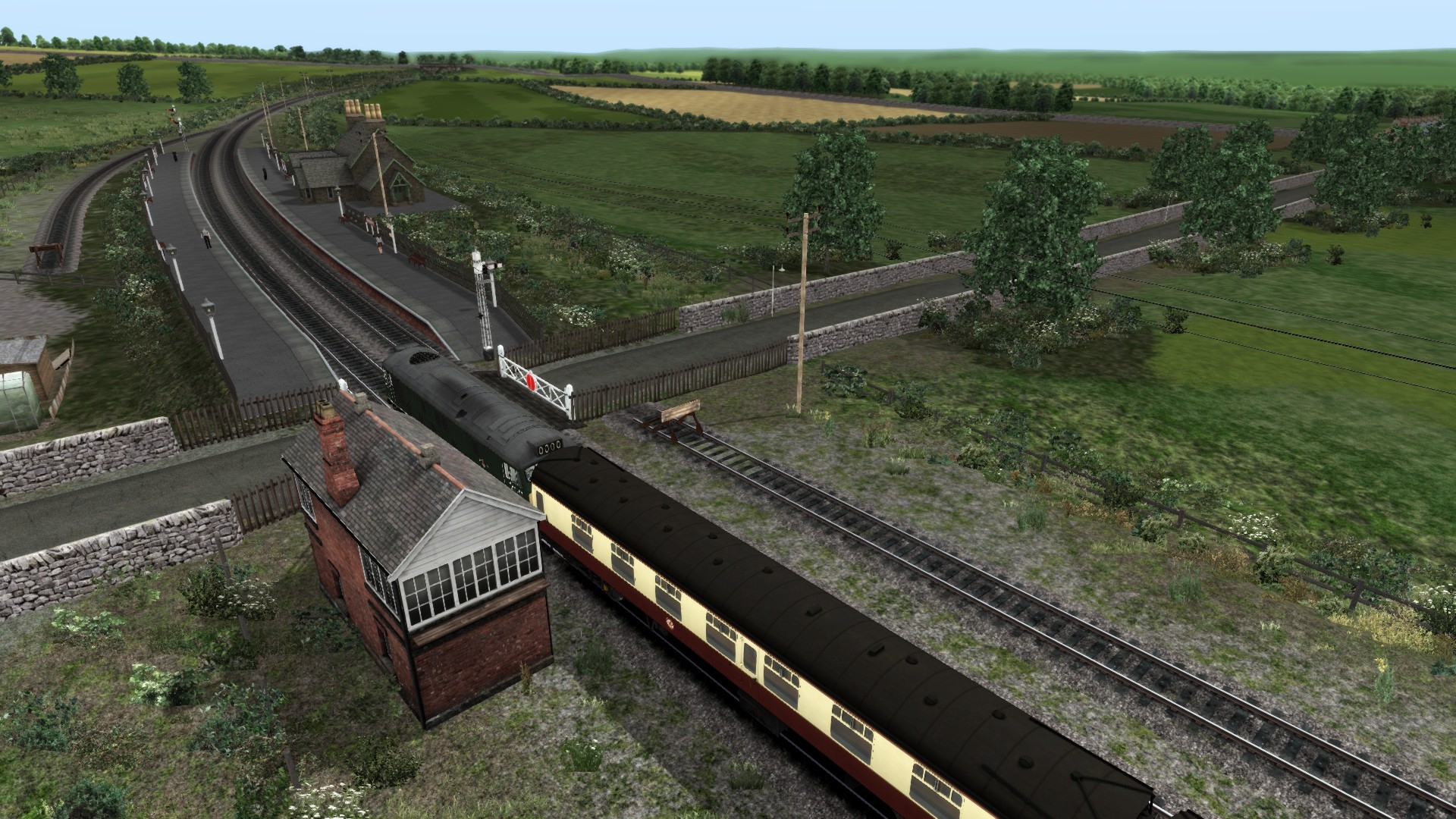
Anyone who knows Brancepeth will be disappointed to find the village’s most imposing landmark absent in TSC2024. Six hundred metres from the station, photogenic Brancepeth Castle was the nerve centre of the Rising of the North, one of half a dozen attempts to overthrow Queen Elizabeth I. The rebel Catholic army that set out from the castle in late 1569 managed to take Durham and Barnard Castle, but failed to attract sufficient recruits to carry the revolt south to York and beyond.
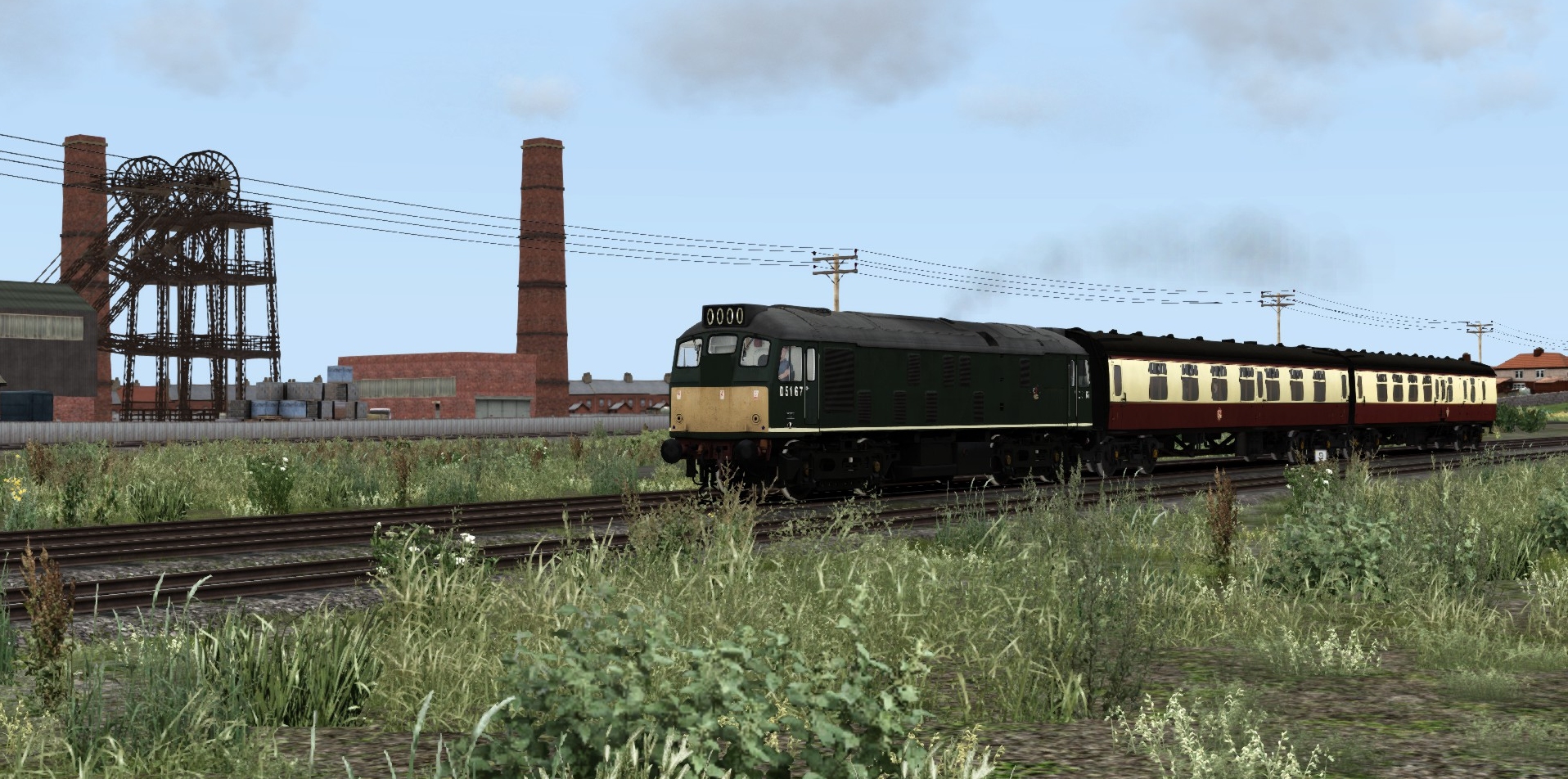
Brandon already? In a few moments we’ll be navigating the tangled Deerness Valley Junction on the outskirts of Durham.

Of the lines visible in the above image, only the one highlighted in green is still in situ today.
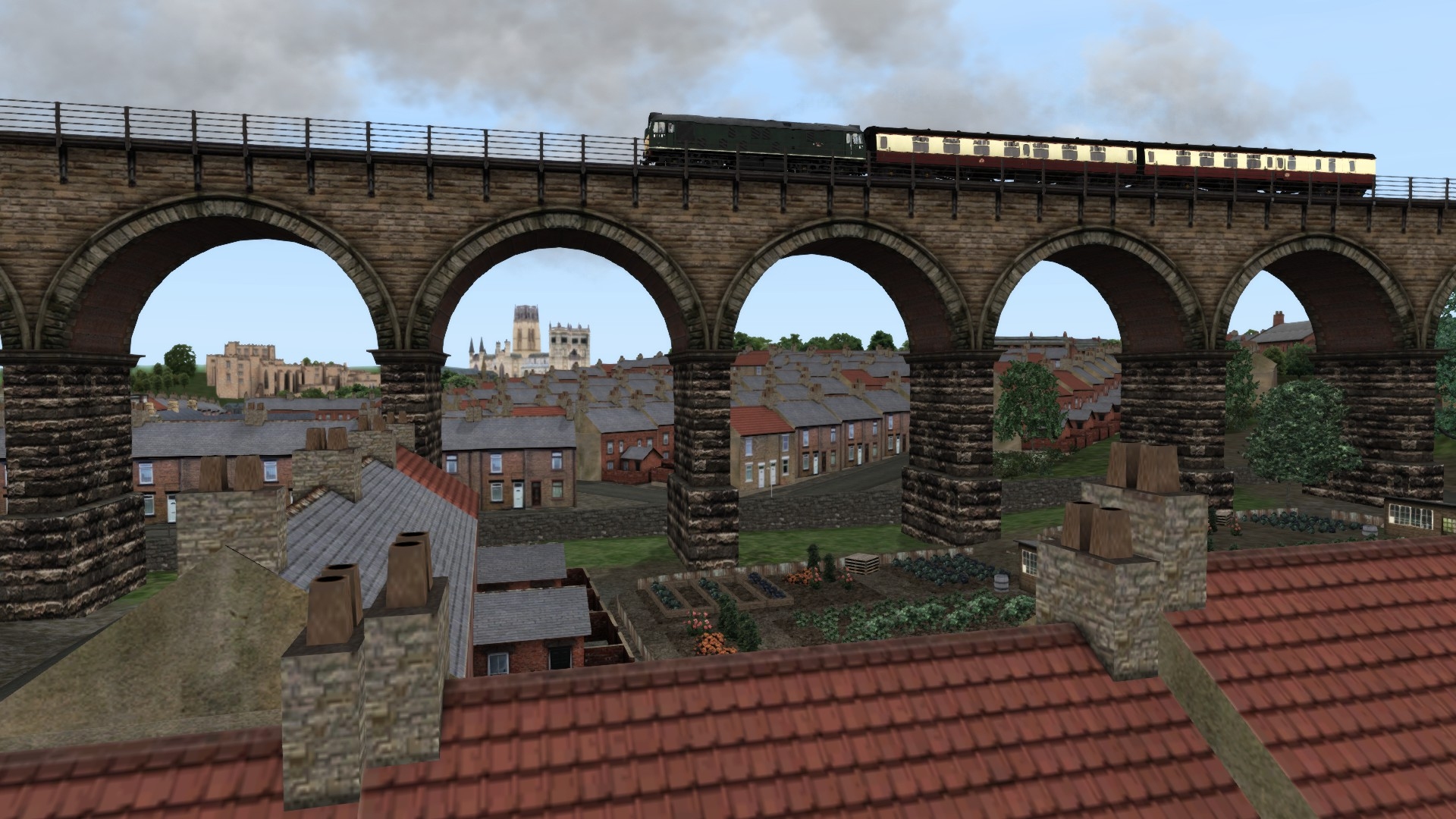
Although Thomas Elliot Harrison was doubtless more concerned with taming challenging contours than providing picturesque panoramas when he designed this elegant eleven-arch valley spanner in 1853, Durham Viaduct fulfills its secondary role every bit as adeptly as it fulfills its primary one.
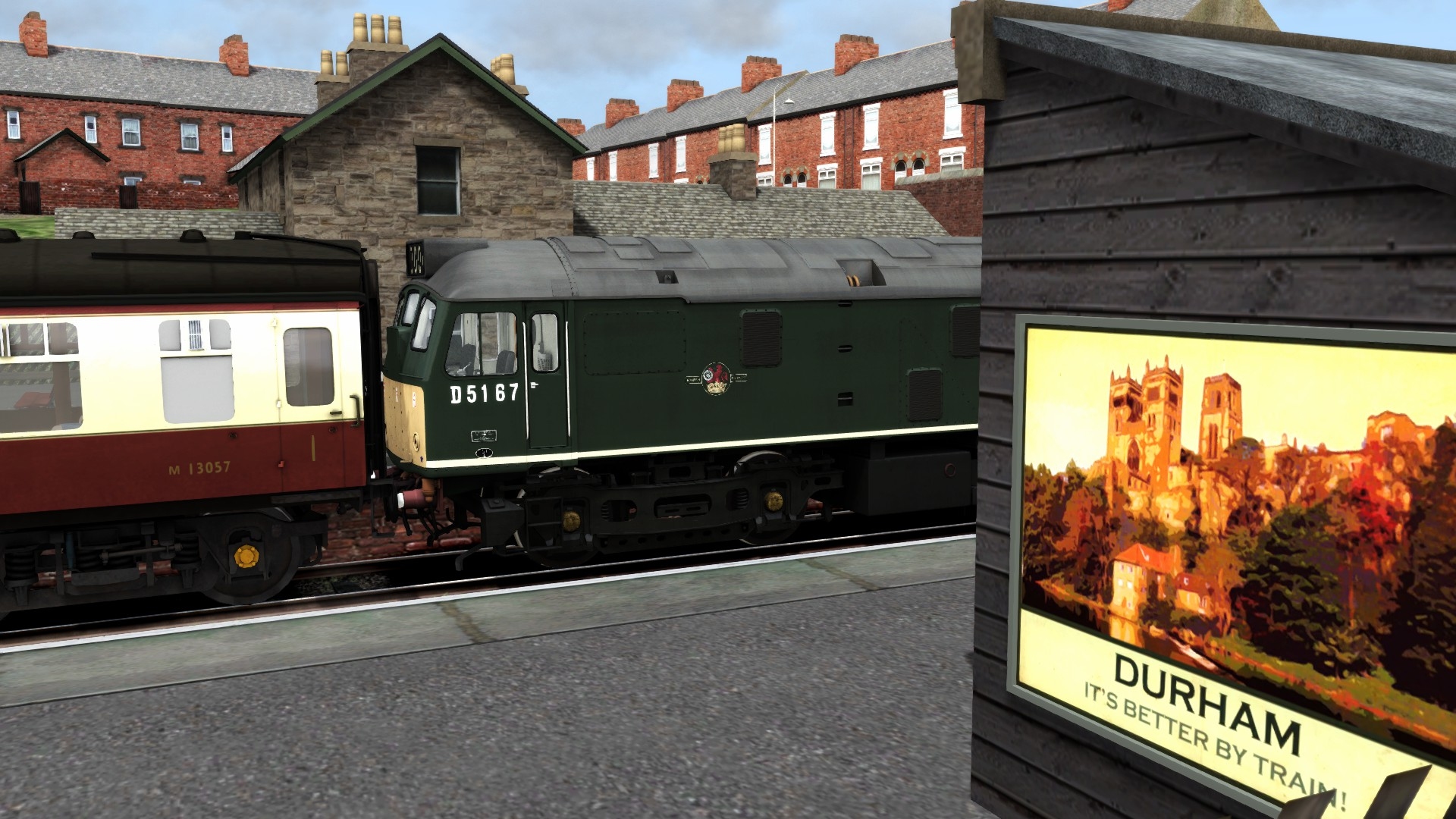
I could talk about the city’s glorious riverside cathedral until the dun cows come holm, but as fitting in lengthy descriptions of revolutionary ribbed vaults, reluctant-to-rot saints, meteorological miracles etc. before we arrive at our destination could prove tricky, maybe I should let a dice decide my final topic.
A five! ‘Scottish POWs’ it is. Walking around the pristine interior of Durham’s magnificent Norman centrepiece today, it’s hard to picture it crammed with sick and starving Scottish soldiers. After Cromwell’s victory at Dunbar in 1650, around 5000 prisoners were marched south into captivity. How many died before reaching Durham nobody knows, but roughly 3000 ended up imprisoned inside the cathedral for up to eighteen months.

As many as half of these unfortunates died from dysentery while locked up. The survivors were shipped off to various places as indentured workers. Just how dreadful conditions were for the closely-packed POWs was revealed when an American tourist slipped and broke her hip while visiting the cathedral in 1967. Keen to find out why the flagstones at the eastern end of the building were always so greasy, church officials arranged for chemical tests to be conducted. The tests revealed the flags were leaching 300-year-old urine!

On that pleasant note, thank you for joining Roman and myself on this coal dust-dusted Tally-Ho Corner tour. I hope you found it interesting, and have no gastric repercussions from the pease pudding and ham sandwiches or the125-year-old ginger beer served en route.

FYI the tune playing as you disembark is by Durham’s finest, Prefab Sprout:


This was even better than advertised. Amazing stories. Thank you Tim and Roman.